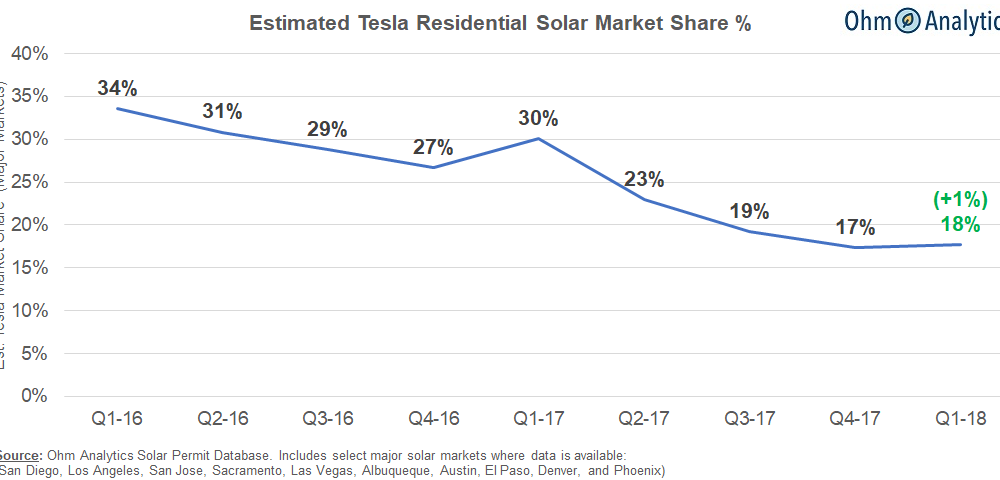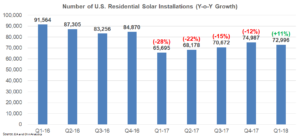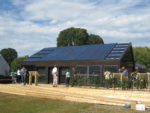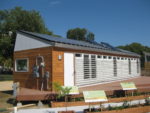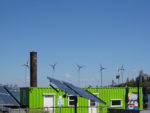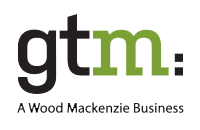Since Tesla acquired SolarCity in 2016, the company’s solar business has deteriorated with volumes falling 38% from 836 MWs in 2016 to 522 MWs in 2017. Most of the decline was self-inflicted, as the company reduced its sales and marketing spend and moved away from a door-to-door sales model. Ohm Analytics’ Q-18 installation data indicates that Tesla’s solar business has hit a bottom and actually increased market share slightly in Q1-18 vs. Q4-17.
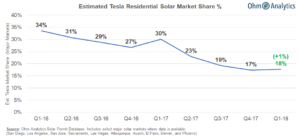
Positive Drivers
With Tesla’s solar business stabilized, 2018 will be a critical year to prove out the company’s new solar strategy as several components are now in place.
- Solar Roofs – Tesla has started installing its solar roof shingles and production began at the company’s New York plant at the end of 2017. An NREL study noted that the annual potential for installing solar at the time of roof replacement/installation in the United States is 3.3 million homes or more than 10 times the current residential solar market. There are many hurdles to realizing this potential, but even capturing a small portion would move the needle for Tesla’s solar business.
- Storage+Solar – Consumer interest in solar+storage has increased dramatically with more than two thirds of solar shoppers indicating that they are also considering a home battery system. States are also increasing incentives for storage systems with California re-opening its SGIP program with a budget of $567 millions in 2017.
- Channel Partnerships – In February, Tesla announced a partnership with Home Depot to sell Tesla products at 800 Home Depot stores. The in-store partnership is being implemented in the first half of this year and could drive growth for Telsa in the second half of the year.
- Overall Market Growth – Tesla should also benefit from the return of y-o-y growth in the overall market with Ohm Analytics reporting an 11% increase in Q1-18 vs. Q1-17. This was driven by growth in California, but also in new solar markets including Florida, Texas and Nevada.
Increasing Scrutiny of Tesla’s SolarCity Acquisition
The stabilization of Tesla’s solar business in Q1-18 is well-timed as the company is facing increased scrutiny of its 2016 purchase of SolarCity. At the end of March, a Delaware judge ruled that shareholders could move forward with a lawsuit claiming that the deal was not in the best interest of shareholders due to conflicts of interest with Elon Musk and the Board.
The 1% increase in market share in Q1 is a positive milestone for the company, but 2018 will be a critical year to prove to the market and shareholders that the SolarCity acquisition was a good deal. There appears to be multiple components of the rebuild strategy in place, but similar to the Model 3 launch, it will all come down to timing and execution.
For more information on Ohm Analytics data sources, please refer to our Q1-18 report release.


